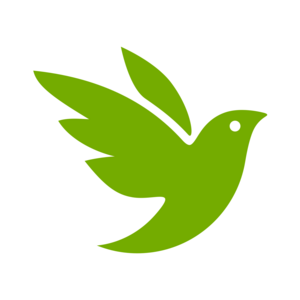Pride Month: Meet @humanbyweight, author of "The Social Wasps of North America"!

It’s Pride Month on iNat, and we’re featuring iNat user Chris Alice Kratzer, (@humanbyweight), a prolific iNat user and transgender lesbian who recently published The Social Wasps of North America, a field guide which she wrote and illustrated. The guide covers more than 200 species and contains 900 full-color illustrations, nearly all of which are based on museum specimens and photos posted by iNaturalist users! What follows is a little piece about Chris and her field guide. We’re also working on setting up a virtual mixer with 500 Queer Scientists later this month, so stay tuned - we’ll make an anncouncement in this thread on the iNaturalist Forum.
Growing up in the woods of western New Jersey, Chris Alice Kratzer says she’s always loved nature and found insects to be particularly accessible. “You can go outside any day and catch a grasshopper. A muddy girl cannot so easily catch a bird,” she explains,
[so] I would spend hours watching the secretive world of insects fly, crawl, and scurry around me – as much a fact of life as the sun in the sky. One year my parents gave me a disposable camera and I used up the whole roll of film on one butterfly. I never let go of that excitement and wonder. I hope I can inspire it in others.
One encounter with wasps in my childhood stands out to me. I was walking through the brush when suddenly I heard a buzzing just to my left – and there, a foot away, was a huge nest of bald-faced hornets. I could see a dozen black-and-white wasps tending to their nest. I froze, and after a minute, I slowly backed away. And I was not stung. They could have stung me, but they didn’t. Why? Everyone knows wasps are vicious. Why wasn’t I attacked? I couldn’t shake my curiosity. 15 years later, I have my answer, and I was able to share it through the world’s first comprehensive field guide to social wasps.
Chris began researching her field guide in earnest starting in 2018, about a year after she joined iNaturalist. “It was always a passion project at its heart,” she explains, and tells me nearly everything she knows about social wasps comes from her research for the book. “I faced an incredibly steep learning curve, which I only pushed through with help from the patience, passion, and generosity of other experts in the field. Through hard work and determination, I am now proud to count myself among them.”
She began volunteering at the Cornell University Insect Collection on weekends, read taxonomic papers, reached out to experts in the field and curators of various collections, and “I spent over a thousand hours studying the ranges and color patterns of wasps on iNaturalist.” Chris also used about 700 photographs from iNaturalist, taken by about 530 photographers.
Most of the photos were used as references for my paintings, but some also appear “as-is” in the final book. I took great care to get written permission from every photographer before use (unless their observation was already marked CC-0, CC-BY, or CC-BY-SA). I think it’s really important to stress that my book would not exist without iNaturalist.

And as you page through the book, you see that Chris credits the photographers whose photos she used for references, and includes their iNat usernames. It’s really cool to see so many names prominently displayed on each species page, and I have to admit I got a little surge of excitement seeing my own name on one of them. In addition to basic facts and descriptions of each species, the guide includes a lot of basic life history information that is written in an engaging and humorous manner, and it includes a handy section about wasp stings and how to avoid them.
In the introduction to The Social Wasps of North America, Chris writes (tongue firmly in cheek) “All of the information in this book is wrong. All of it. Wasps are an appallingly understudied group of organisms,” although hopefully that won’t be the case forever. “iNaturalist,” says Chris,
opens the door to so much new and exciting research on understudied taxa. It is currently being used to help identify introduced species before they can become established, document rare species, and expand our knowledge of ranges, habitats, behaviors, life cycles, food webs, and color variation among known species.
In my opinion, [it’s] the cutting edge of ecological science. I expect to see many more field guides that use iNaturalist data in the future.
Writing this book was not the only major decision Chris (below, researching her next guide) made over the past few years. She also decided to embrace herself and who she was. “I am proud to be visible as an engineer and scientist who also just happens to be a transgender lesbian,” she says.

I am a woman who, through no fault of myself, my parents, or my doctors – was accidentally raised as a boy. I tried my best to live up to everyone’s expectations of my gender, but 20 years of pretending left me empty and broken. I finally started living as myself in 2020 – to heck with what people think. It was the right choice for me. I finally feel like myself, and I have never been happier…I have a wonderful girlfriend named Zoey whom I love with all of my heart!
However, as she continues to work both as an engineer and on her next field guide - The Cicadas of North America - she’s found it difficult to focus on science due to attacks on queer and transgender people in the US. “We just want to lead happy, healthy, and productive lives, just like everyone else,” she says, “[and] it is terrifying to watch innocent people (including many of my close friends and colleagues) become targets of political violence and prosecution.”
- Chris is working on a Spanish translation of The Social Wasps of North America, scheduled to come out later this year.
- Check out this video, in which Chris demonstrates her illustration process for the book.
- When asked if she had a favorite wasp, she said her answer changes a lot but she does really find Arctic Yellowjackets (Dolichovespula albida) to be particularly fascinating. "They live high above the Arctic circle. The queens can survive being frozen and their nests have special adaptations that allow the colony to survive the temperature extremes of the Arctic spring and summer. It is amazing to me that a social insect can survive in those conditions."
- In her engineering work, Chris is using her entomological background “to create the next generation of structural insulation based on the structure of wasp nests (specifically the Arctic Yellowjacket!), which has the potential to significantly reduce carbon emissions associated with heating and cooling buildings. Our prototypes are already better than most fiberglass! It is my dream to lead a team to develop new sustainable technologies that can help to mitigate the worst effects of climate change, and I am slowly realizing that vision.”
- You can follow Chris on Twitter.
- In a journal post, Chris lists over a dozen potentially undescribed species or subspecies she’s come across while doing research on iNat.

















